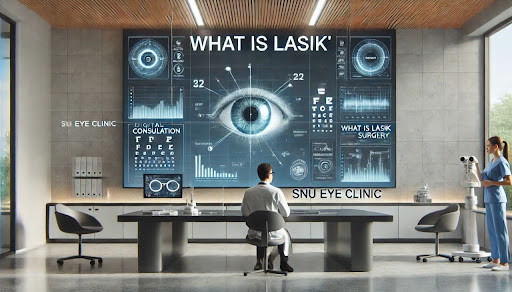Laser-Assisted In Situ Keratomileusis (LASIK) has revolutionized the world of vision correction, offering millions the chance to live without glasses or contact lenses. It’s a procedure that reshapes the cornea to correct common refractive errors such as myopia (nearsightedness), hyperopia (farsightedness), and astigmatism. While LASIK is one of the most popular and effective elective snuseoul surgeries worldwide, it isn’t for everyone. Understanding what LASIK entails, its benefits, risks, and candidacy requirements is essential for anyone considering the procedure.

LASIK works by using a precision laser to create a thin flap in the cornea, then reshaping the underlying tissue to correct vision. The flap is then laid back in place to heal naturally. The entire process usually takes less than 30 minutes, and most patients experience significant improvement in vision within 24 hours. This convenience and effectiveness have made LASIK appealing to many. However, it’s vital to note that outcomes can vary depending on individual eye conditions and health profiles, which is why a thorough pre-operative assessment is necessary.
Before deciding on LASIK, patients must evaluate their candidacy. Ideal candidates are generally over 18 years old, have had a stable prescription for at least a year, and are in good overall eye health. Individuals with thin corneas, severe dry eye syndrome, or certain autoimmune diseases may be disqualified. Pregnant or nursing women are also typically advised to postpone the procedure due to fluctuating hormone levels that can affect vision. A comprehensive eye examination will determine if the corneal thickness, pupil size, and other factors align with safety standards for LASIK.
Despite its high success rate, LASIK does carry some risks. Temporary side effects such as dry eyes, glare, halos, or starbursts around lights at night are common, especially in the initial healing phase. In rare cases, patients may experience undercorrection, overcorrection, or regression, potentially requiring a second surgery. Severe complications like infection or vision loss are exceedingly rare, but they underscore the importance of selecting an experienced surgeon and a reputable clinic. Being fully informed about potential side effects helps patients maintain realistic expectations and prepare for post-operative care.
One of the biggest appeals of LASIK is its potential for life-changing results. Many patients achieve 20/20 vision or better, drastically reducing or even eliminating their dependence on corrective lenses. The procedure also offers long-term cost savings by removing the need for new glasses, contact lenses, and associated accessories. Active individuals, athletes, and professionals who spend a lot of time outdoors or in front of screens often find LASIK to be a significant lifestyle upgrade. Moreover, technological advancements have made the procedure safer and more customizable than ever.
In conclusion, LASIK can be a transformative experience for the right candidate. It offers quick recovery, minimal discomfort, and the potential for lasting vision correction. However, it’s not a one-size-fits-all solution. A detailed consultation with a qualified ophthalmologist is essential to determine suitability and discuss risks. If you’re considering LASIK, do your homework, ask the right questions, and choose a provider with a strong track record. Informed decision-making is the first step toward clearer, lens-free vision.